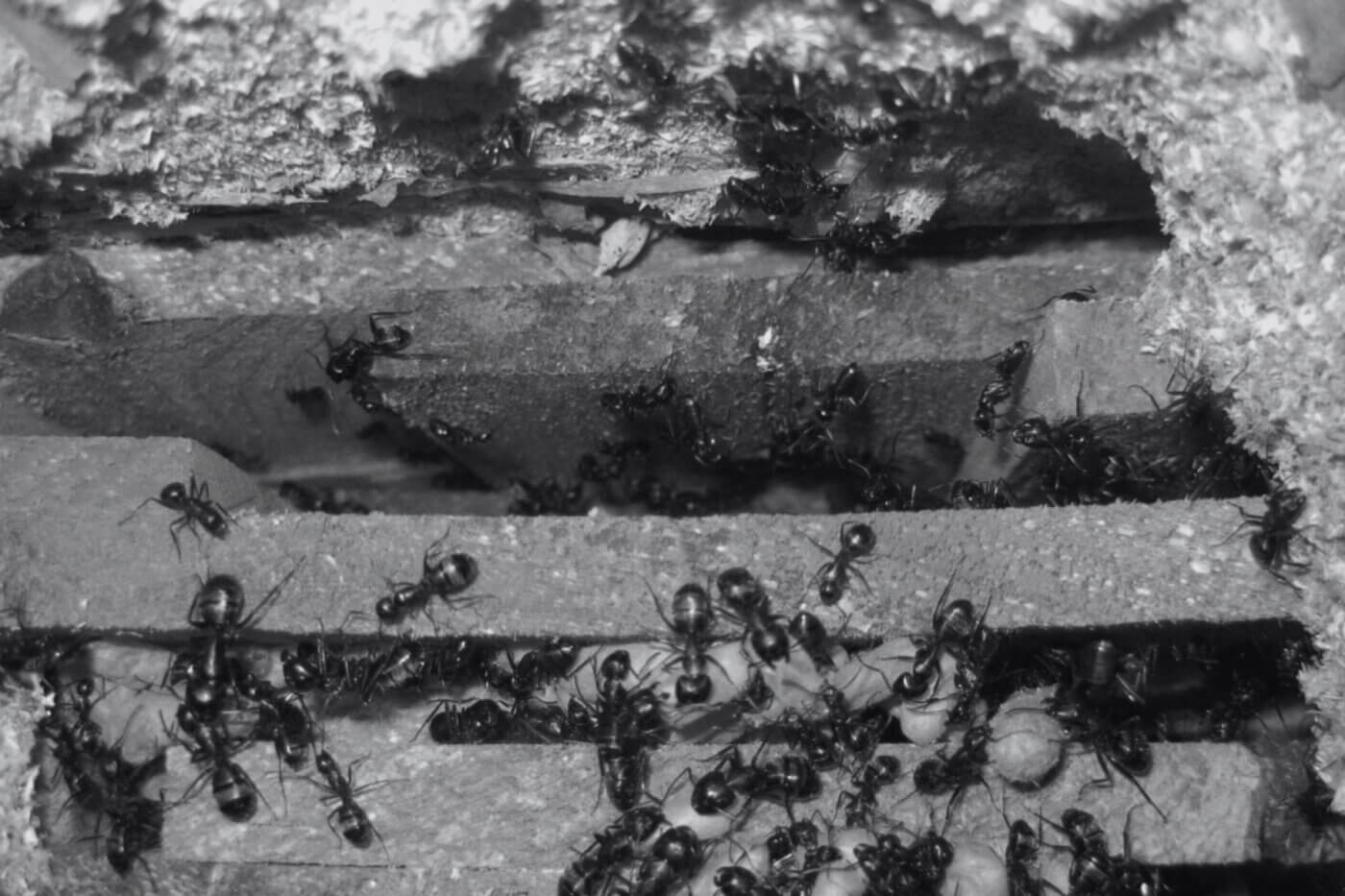BackCarpenter Ants: Signs of Infestations and How to Exterminate Them

Think you could be dealing with carpenter ants in your home? These pesky critters can cause a lot of damage by burrowing into wood to create their nests. It’s important to know how to identify the signs of an infestation and effectively exterminate them to protect your property.
Check out this guide for some helpful tips on how to deal with carpenter ants.
Recognizing the Signs of a Carpenter Ant Infestation
- Wood Damage: Carpenter ants prefer moist, decaying wood to establish their colonies. Unlike termites, they do not consume wood but remove it to create galleries for their nests. Look for smooth, clean tunnels within the wood structure—a telltale sign of carpenter ants at work.
- Sawdust Trails: As carpenter ants burrow into wood, they leave behind a material that resembles sawdust, known as frass. Finding small piles of frass beneath wooden items like beams, windowsills, or baseboards can indicate their presence.
- Sounds Within the Walls: Pay attention to faint rustling noises from within the walls, especially at night when carpenter ants are most active. These sounds come from the ants as they expand their tunnels.
- Ant Sightings: If you see large, winged ants inside your home, especially during spring or early summer, it could indicate an established colony nearby. Worker carpenter ants, which are smaller and wingless, may also be seen foraging for food.
Steps to Exterminate Carpenter Ants
- Locate the Nest: The first step is to identify the main colony and satellite nests. Then, follow ants’ trails to see where they lead, often back to damp areas with decaying wood.
- Use Bait Stations: Bait stations can be effective in controlling carpenter ant populations. The ants carry the bait back to their colony, eventually killing it, including the queen. Place baits near entry points or along ant trails.
- Apply Insecticide: A non-repellent insecticide targeted at carpenter ants can be used around the perimeter of your home and in locations where ants are active. Using products specifically designed for carpenter ants is crucial to ensure their effectiveness.
- Remove Moisture Sources: Reducing moisture and fixing leaks in your home can discourage carpenter ants from nesting. Replace any water-damaged wood and ensure your home’s drainage systems function properly.
- Professional Pest Control: If the infestation is severe or the DIY methods fail to eliminate the ants, it may be necessary to call in professional pest control services. Experts can provide more powerful treatments and offer long-term solutions to prevent future infestations.
Carpenter ants can cause significant damage if left unchecked, but early detection and proper extermination techniques can protect your home and property. You can keep your home safe from these destructive pests by being vigilant and taking immediate action at the first sign of an infestation.
Bug House Gets the Bugs Out!
Are you concerned about carpenter ants in your home? Contact us today to schedule an inspection and get professional extermination services. Protect your home from the damage carpenter ants can cause!
Contact Bug House today to schedule pest control service. We proudly serve customers throughout Georgia in Augusta, Carrollton, Columbus, Dublin, Eastman, Forsyth, Lake Oconee, Macon, Madison, McDonough, Milledgeville, Monroe, Sandersville, Savannah, St. Simons, Warner Robins, and Watkinsville.